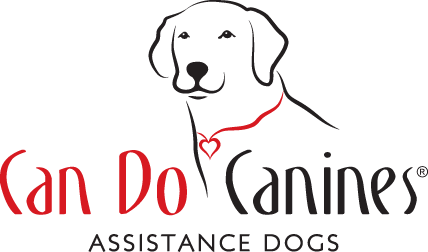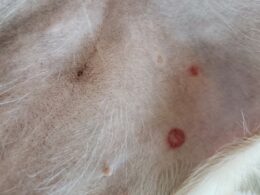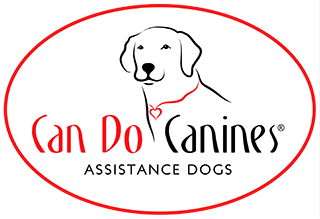Hot Pavement
It is important to check how hot the pavement is before walking the dog on it. With sun, darker surface temperatures can reach double outside temps! Follow these guidelines to determine safe use:
- If possible, use the back of your hand and hold it on the pavement. Ask your support person to help if you are not able.
- Count to seven.
- If you can hold the back of your hand on the pavement, it is safe for the dog.
- If you cannot hold your hand on the pavement, it is too hot and you should use an alternative route if possible and avoid long duration on the pavement.
- Alternative routes include:
- Use of grass, rocks, or other landscape.
- Find a spot close to the building you are entering.
- Use concrete if possible versus asphalt.
- Avoid taking the dog on pavement during the midday heat of the sun.
- Musher’s Secret can be used to protect the dog’s paw pads from injury. It will keep paws conditioned and protect them from cracks.
Water Ingestion, Intake, and Bloat
During summer fun with sprinklers, kiddie pools, lakes, and large pools, dogs may ingest large amounts of water which can be dangerous to their bodies. Too much water intake can lead to water intoxication or bloat. Be sure to monitor the dog’s water ingestion during these activities and give them breaks as needed.
Though too much water can be dangerous, it’s still important to keep the dog hydrated during the warm months. Provide small amounts of clean, fresh water during and after exercise. Typically, dogs require about 1 cup of water per 10 pounds of weight daily to stay hydrated. Some dogs are able to self-limit water intake on their own while others may need help regulating their intake.
Also, be sure to monitor your dog’s water source. Stagnant water can contain parasites and lead to parasitic and bacterial infections.
Heat Stroke
Heat Stroke occurs when the dog is in the heat and sun for too long and becomes overheated at a dangerously high body temperature. If the temperature is above 85 degrees, time outside and vigorous exercise and activity should be very limited. It is okay for the dog to stay home, while you are doing activities. Signs of Heat Stroke include:
- Rapid panting
- Bright red tongue
- Red or pale gums
- Thick, sticky saliva
- Lethargic
- Weakness
- Dizziness
- Vomiting
- Diarrhea
- Shock
- Coma
If the dog is showing any of these signs, it is an emergency and follow these steps:
- Remove the dog from the hot area immediately.
- Call your veterinarian.
Cabins
Be sure to research the closest emergency veterinarian prior to taking your dog to a cabin.
Just like when you are home, your dog is to remain on leash unless in a fully fenced area.
Swimming and Boats
Swimming:
Swimming is great exercise for dogs.
Guidelines:
- Use a long line if you take the dog swimming at a lake.
- The dog should not be wearing their cape while swimming or dipping their feet in.
- If you have access, the dog is allowed to swim in a personal pool, but must be on a long line if the yard is not fenced. Use a lifejacket if the dog cannot touch the bottom. Always supervise.
- Dogs, even service dogs, are not allowed in public pools or splash pads.
 Be mindful that the body of water is safe!
Be mindful that the body of water is safe!
- No scum or algae or notices posted advising against swimming.
 Blue Green Algae is a big concern in lakes across Minnesota. It can be fatal to dogs. Click here for more information.
Blue Green Algae is a big concern in lakes across Minnesota. It can be fatal to dogs. Click here for more information.
- Take breaks during swim sessions to let the dog recover.
- Do not let the dog consume water while swimming.
- Provide clean fresh water for the dog to drink.
- Make sure to rinse and thoroughly towel dry the dog after swimming to prevent hot spots.
Boats:
Dogs are allowed to ride in boats. Our vehicle safety recommendations apply:
- Make sure the dog is secured via tether.
- Have the dog wear a life jacket. Your CSC can help make sure the life jacket fits properly.
- Please do not allow the dog to jump from the boat at any time.
Eating Inappropriate Objects
Now that you may be spending more time outside and as things bloom and grow, there is more opportunity for a dog to eat objects they are not supposed to. The objects listed below could cause obstructions or be toxic:
- Grass
- Rocks
- Mulch(including cocoa mulch)
- Sticks
- Wildlife poop
- Fertilizers
Bug Bites
Those pesky bugs! Summertime brings bugs and just like humans, dogs can get bug bites too. These are often from gnats or biting flies. Here is an image of what they can look like. They normally take a few days to go away. If the spots seem to get worse or last more than a few days, reach out to your veterinarian.
Have Benadryl (NOT the Liquigel) on hand for bee/wasp bites. Call our emergency line with concerns.
Flea/Tick and Heartworm Preventative
Here at Can Do Canines, we give all our dogs Flea and Tick and Heartworm preventatives on the first of every month. Tick populations are rampant and it is very important that the dogs are getting these medications. With that, make sure to do frequent body checks for lumps, bumps, bug bites, and ticks.
Check for ticks often, even though the dogs are on preventatives. The underbelly and ears are other great places to look!





